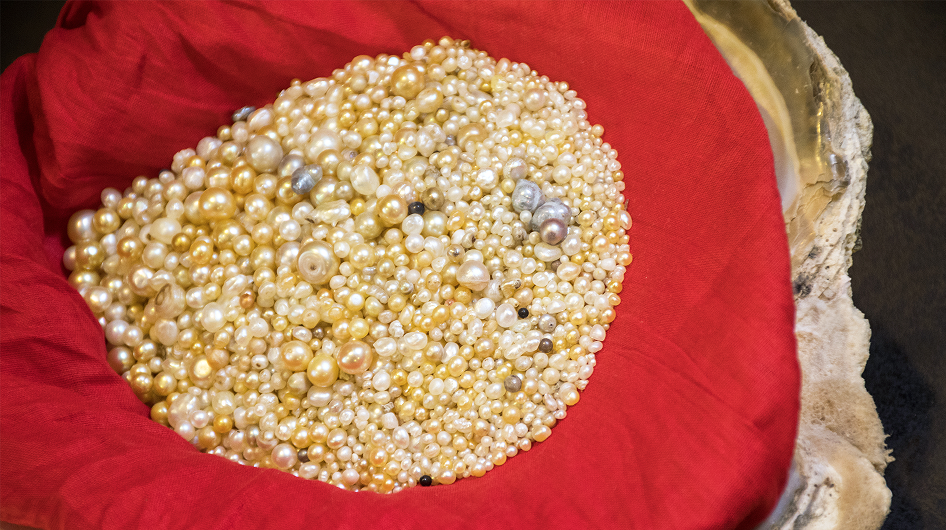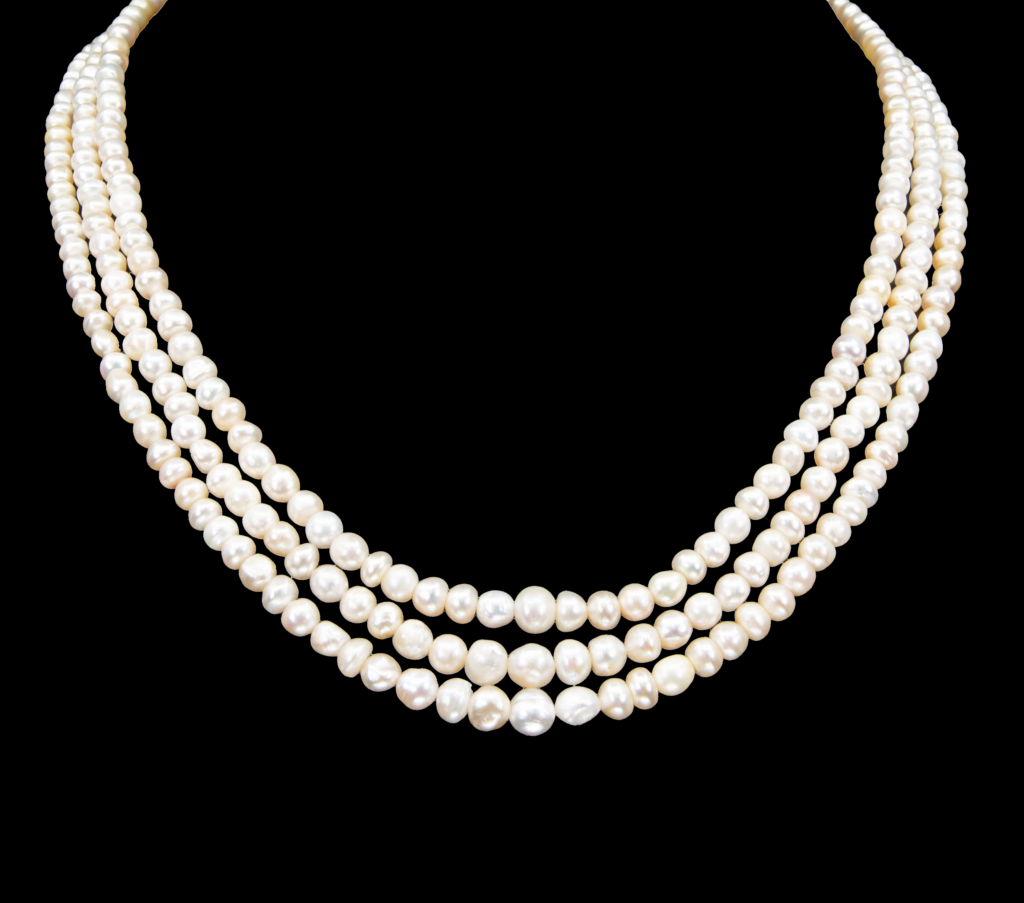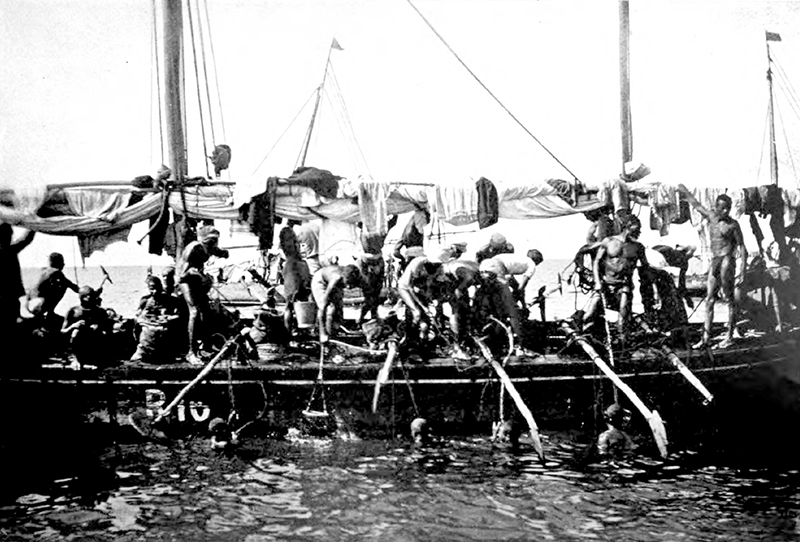For many centuries Bahrain was the pearling center of the world supplying natural pearls to those wealthy enough to own them. The entire economy of this island nation, which sits between Saudi Arabia and Qatar in the Arabian peninsula, was built on the pearling industry. The country was bustling with divers, boat owners, merchants and a host of supporting services all focused on finding these natural gems. The nation thrived as a pearling center for over 4,000 years, it was even mentioned in the writings of Pliny the Elder, considered by some to be the first gemologist. Then in the early 20th century a perfect storm of events occurred that changed everything.
The advent of cultured pearls and their subsequent less expensive price crashed the natural pearl market, World War I broke out and finally the stock market collapsed. In 1932 oil was discovered in Bahrain and the economy refocused on pumping oil. The pearl industry dwindled significantly during this time.
UNESCO Heritage Site
Despite the decline of the pearling industry in Bahrain its legacy was strong and in 2012 UNESCO inscribed the Bahrain pearl beds as a World Heritage Site stating: “The site is the last remaining complete example of the cultural tradition of pearling and the wealth it generated at a time when the trade dominated the Gulf economy (2nd century to the 1930s when Japan developed cultured pearls). It also constitutes an outstanding example of traditional utilization of the sea’s resources and human interaction with the environment, which shaped both the economy and cultural identity of the island’s society.”
In 2017, in an effort to diversify its economy, the Bahraini government released a plan to resurrect the pearling industry and the Bahrain Institute for Pearls and Gemstones (DANAT) was established. DANAT is a gemological laboratory, education and research center, focused on testing and studying natural pearls. The lab’s gemological research along with a commitment to innovative technology, allows DANAT to contribute to the protection of the marine environment in the Bahraini waters. DANAT also has an educational program focusing on natural pearls as well as identification services.
It also happens that the waters of Bahrain where saltwater converges with fresh natural springs in the Gulf, create a friendly environment for pearls. The water is also rather shallow, which allows the oysters to get some sunlight. Additionally, the water has good salinity, plenty of food for the oysters and it’s warm, which helps the oysters reproduce.
Changed Industry
After decades of no pearling the industry has changed. Long gone are the days when most of the male population of the island went pearl diving on boats, called dhows, that were gone for months, typically leaving in June and returning in October. On the day the pearling boats left for their expedition there was a grand send-off. Women sang songs of hope that their loved ones would return home safely. The boats would sail off to the pearl beds where they would park and divers would go deep into the water for as long as they could hold their breath looking for pearl bearing oysters. It was hard, dangerous work and there were casualties. When the pearling boats were seen returning the crowds assembled to greet them and once again women sang songs for the safe return of their husbands and sons, some came home safely, others did not. The pearls that were found in Bahrain were sent to Europe and India where they were traded to other markets.
Today pearl diving is much different. Divers, often self-employed or hobbyists must get a license to go pearl diving, a practice established by the government to monitor and regulate pearl divers to avoid overfishing. As of 2022, there are about 1,500 licensed pearl divers who go to the pearl beds in small boats and don scuba gear to dive. Oysters are still collected by hand and there is a limit to the number of oysters that each diver may take.
Tourists may also try their hand at pearl diving in Bahrain. It is the only nation in the world that permits tourists to pearl dive for fun, however they are only allowed to collect 60 oysters per person.
Besides the obvious benefit of finding a pearl, the other benefit of pearling is actually helpful to the oysters. Pearl oysters grow on top of each other and the ones on the bottom tend to die. Harvesting oysters helps regenerate oysters by keeping the beds healthy. The pearl beds, which are around the same size as the island of Manhattan, are closely monitored by DANAT with the Supreme Council for the Environment and the Coast Guard. If there is evidence that the oysters are being over harvested diving will be suspended in that area to allow them to grow.
Pearls that come out of Bahrain are known as “Natural Arabian Gulf Pearls” and they are characterized by a white to light yellow color range and a very high luster.
Despite a movement to reinvigorate the Bahrain pearl industry and bring natural pearls to the forefront of consumer demand, natural pearls are formed by chance and they are found by luck. What does that mean? For the foreseeable future, Natural Arabian Gulf Pearls remain a rare gift of nature.
Featured image (top of page): Natural Arabian Gulf Pearls, photo courtesy DANAT.
Authored by Amber Michelle


